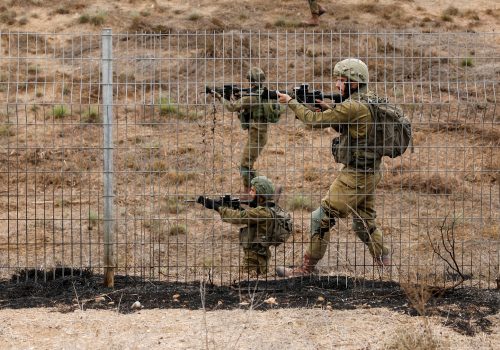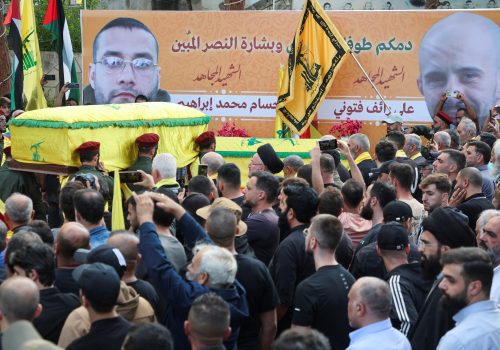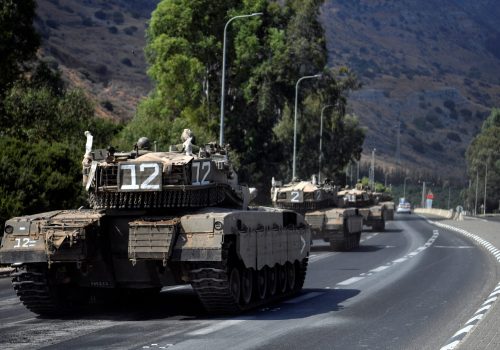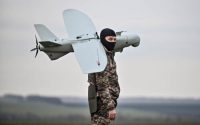What to expect from Israel’s ground invasion of Gaza
The terrorist attacks launched by Hamas inside Israeli territory have left more than 1,200 Israelis dead, the most Jewish people murdered in one day since the Holocaust. In response to these heinous terrorist attacks, Israel has launched a major military campaign against Hamas in Gaza. It could be a long campaign, lasting months or more, but the first days and weeks matter a great deal to its ultimate success.
So what is success? Israeli officials have stated that the goal of the operation is the complete destruction of Hamas’s military capabilities. A limited air campaign alone will not achieve this goal, and it is reasonable to expect a ground campaign into Gaza commencing soon. Indeed, already there are signs of what it will look like.
Kinetic shaping operations
In the last couple days, Israel has moved to secure Israeli territory and kill or capture any remaining terrorists on Israeli soil. The Israel Defense Forces (IDF) also began air strikes inside Gaza to eliminate Hamas command and control, key leaders, tunnels, weapons caches, and rocket launchers to reduce the risk of rocket strikes against Israeli civilians and the risks to IDF members during a ground operation. Those actions will continue until Israel believes it has reduced the risk of both to the extent possible prior to ground operations commencing.
As it has launched air strikes on Gaza, Israel has in certain cases continued its practice of “roof knocking,” or dropping inert bombs on targets it intends to hit if the structure also is known to contain civilians. This practice can also include disseminating WhatsApp and text messages in specific areas prior to striking, telling civilians where to go to avoid violence, in addition to more broadly released generic messages to the same effect. However, Gaza is densely populated, and in urban combat it is difficult to avoid civilian casualties. There is also no guarantee that civilians will heed the warning, in part because there are few places to go. Egypt has closed the Raffa crossing border checkpoint, and all the entry and exit points along the Israeli border with Gaza are closed after they were attacked by Hamas terrorists. Arab states have said they will send aid to Gaza, but Israel has forced trucks attempting to enter Gaza from Egypt to turn back out of fear they may contain weapons or supplies for Hamas.
How the ground campaign starts
Once the shaping operations are complete, Israel will be poised to conduct a major ground offensive inside Gaza. The IDF has said that more than one hundred thousand troops are surrounding Gaza, and the Israeli navy has enforced a complete naval blockade to ensure Hamas is not resupplied with weapons and supplies by sea. Additionally, the Israel government has cut off water and electricity to the area that is home to 2.1 million people.
The only way for Israel to achieve its goal of eliminating Hamas’ military capabilities is house-to-house, block-to-block urban warfare. It will likely involve both conventional and special operations forces moving methodically through the area to eliminate the terrorist threat and destroy any and all military capabilities, from communications gear to weapons stocks. This could take several months given the size of Gaza, the number of terrorists willing to fight, the extent of terrorist weapons caches, and the size of the civilian populace. It will not be easy, but Israel’s superior military capability puts it in a good position to carry out this grueling campaign. Yet even military success would not be an end point, since an important political decision will then be required: whether Israel plans to return control and security to any Palestinian faction or group following the conclusion of the operation.
The challenges of hostage rescue
Hamas terrorists took more than one hundred hostages into Gaza, according to reports. This complicates ground operations significantly. There are a number of foreign nationals among the hostages, including Americans, as US President Joe Biden confirmed on Tuesday. To increase rescue options for the United States, US Special Operations Forces in a nearby European country reportedly have been put on high alert in case they are needed. In addition, Secretary of Defense Lloyd Austin has confirmed that US military personnel are on the ground assisting Israel with “intelligence and planning” for rescue operations.
A rescue operation is Gaza would be difficult. The hostages are likely dispersed and the threat from small arms fire and shoulder-fired weapons such as rocket-propelled grenades and man-portable air-defense systems makes a helicopter-borne mission unlikely given the risks. This likely limits planners and forces to either a ground or sea-borne rescue operation. Given the lack of medical evacuation support or the ability to easily insert quick reaction forces to back up operators on the ground without the presence of a larger ground force, it would be difficult to conduct simultaneous clandestine rescue missions for hostages in multiple locations across Gaza.
As such, it is more likely that these specialized forces would be deployed during a ground invasion alongside or slightly in advance of conventional forces. The IDF and US military have the capability to conduct these operations. At the same time, the international optics and propaganda value of a US operator being injured, captured, or killed would be significant, even with domestic support in the United States for such an operation to rescue US citizens.
A wider war?
Israel appears set to initiate a months-long ground campaign that is designed to completely eliminate the terrorist threat posed by Hamas and to prevent and deter a terrorist attack like this from ever happening again. The operation faces risks given hostages on the battlefield and the difficult nature of urban warfare that requires house-to-house clearing operations. Yet another significant risk to the success of the operation is regional and international condemnation of a humanitarian crisis that the operation is likely to cause.
The threat of the war expanding into a regional conflict also looms. Iran-backed Hezbollah, which is reported to have around 150,000 rockets capable of striking Jerusalem and Tel Aviv, could get involved. Thus far, neither Hezbollah nor Palestinian factions in the West Bank have fully joined Hamas in its war against Israel, but that could change in this quickly evolving conflict. These risks and others that will surface in time must factor into military planning as Israel begins its ground operations in Gaza.
Alex Plitsas is a nonresident senior fellow with the Middle East Programs’ N7 Initiative, a partnership between the Atlantic Council and Jeffrey M. Talpins Foundation working to strengthen and deepen Arab-Israeli normalization. He is also currently a principal and industry director for aerospace and defense and high-tech electronics at Providence Consulting Group.
Further reading
Tue, Oct 10, 2023
Live expertise: Get the latest insight on the Israel-Hamas war
New Atlanticist By Atlantic Council experts
Atlantic Council experts are analyzing the rapidly unfolding events in the Middle East as they happen. Find the latest here.
Tue, Oct 10, 2023
What will Hezbollah do next? Here’s how the Hamas-Israel conflict could engulf the region.
New Atlanticist By Nicholas Blanford
Neither Israel nor Hezbollah appears to want an escalation, but the risks are high for a disastrous miscalculation.
Sun, Oct 8, 2023
Dispatch from Jerusalem: How does this end?
New Atlanticist By William F. Wechsler
Israel must not make the same mistakes that the United States made after 9/11. Here are some critical questions to ask now.
Image: An Israeli tank advances towards the Gaza border from an area near Netivot in southern Israel on Oct. 10, 2023, as Israel stepped up its offensive against Palestinian militant group Hamas. (Kyodo)





